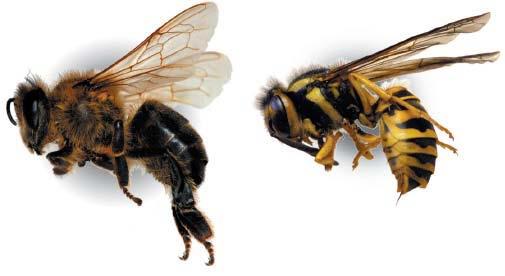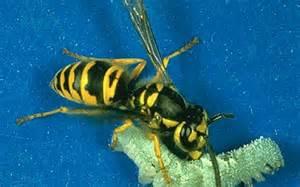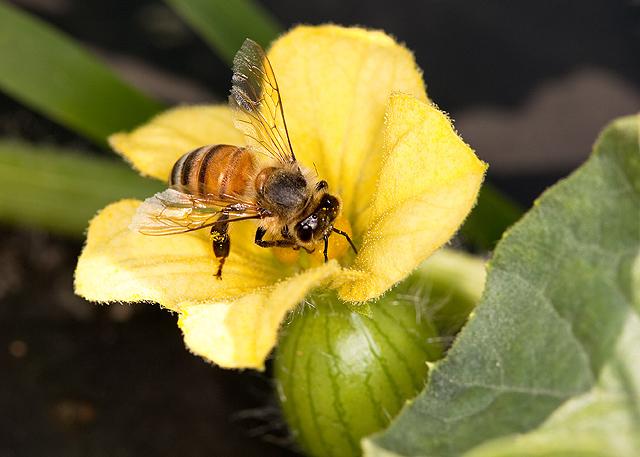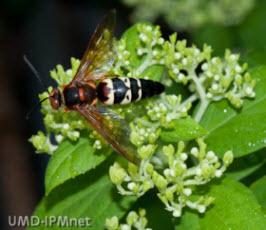Bees and Wasps and Schools
On this page:
Basics

Photo Credit: Mike Merchant (Texas A&M University)
There are more than 20,000 bee species. Bees gather nectar and pollen from brightly colored flowers to feed their young. While gathering these meals, bees pollinate flowers, as do butterflies, moths, and birds. Unlike other pollinators that only seek nectar, bees also seek pollen, so they often do more of the "heavy lifting" of pollination.
Wasps and bees differ in many ways:
- Wasps are more aggressive and have thinner, longer frames because they are hunters.
- Bees have hairier bodies in order to collect and hold pollen and nectar; wasp bodies are smooth.
- Wasps feed their young flies, caterpillars and spiders, but like bees, adult wasps feed on nectar.
Body Shape: Wasps and bees, like all insects, have six legs, three body parts (head, thorax and abdomen), two antennae on their head and an exoskeleton. They also have two wings.
Different types of bees have different stinging abilities. Carpenter bees and bumble bees can sting over and over again because their stingers will not get caught, while honeybees can only sting once. Wasps are also able to sting multiple times.
Life cycle: Bees and wasps transition from eggs, to larvae, to pupas, to three different types of adults: queens, drones/males and workers. Drones/males mate with the queen so that she can produce more eggs, while workers are all female bees.
Health Concerns
People can be highly allergic to stings from bees and wasps. Even for those who are not allergic to the sting, the result can be uncomfortable.
Integrated Pest Management (IPM) Strategies
- Never leave food out beyond meal time.
- Clean up sticky, sweet syrupy drinks immediately.
- Keep trash cans sealed or covered, and remove trash cans and dumpsters frequently.
- Keep areas dry - repair leaky faucets, and fix areas where water creates puddles after the rain.
- Plug any holes in buildings and ensure that screens are on windows to prevent bees and wasps from entering the classroom.
For more information on preventing, monitoring and controlling bee and wasp infestations in schools, visit the resources below.
Read more:
The following links exit the site Exit
- School IPM for Wasps and Bees (PDF) (4 pp, 205.5 K, About PDF)
- Wasps, Hornets and Bees (PDF)(3 pp, 89 K)

Photo Credit: University of Maryland

Photo Credit: Stephen Ausmus (USDA/ARS)

Photo Credit: University of Maryland
There are multiple different types of bees and wasps that might be present in your area. The following links provide information on how to identify each different type of bee or wasp, how to avoid getting stung, suggestions for monitoring and removal of a hive:
The following links exit the site Exit
